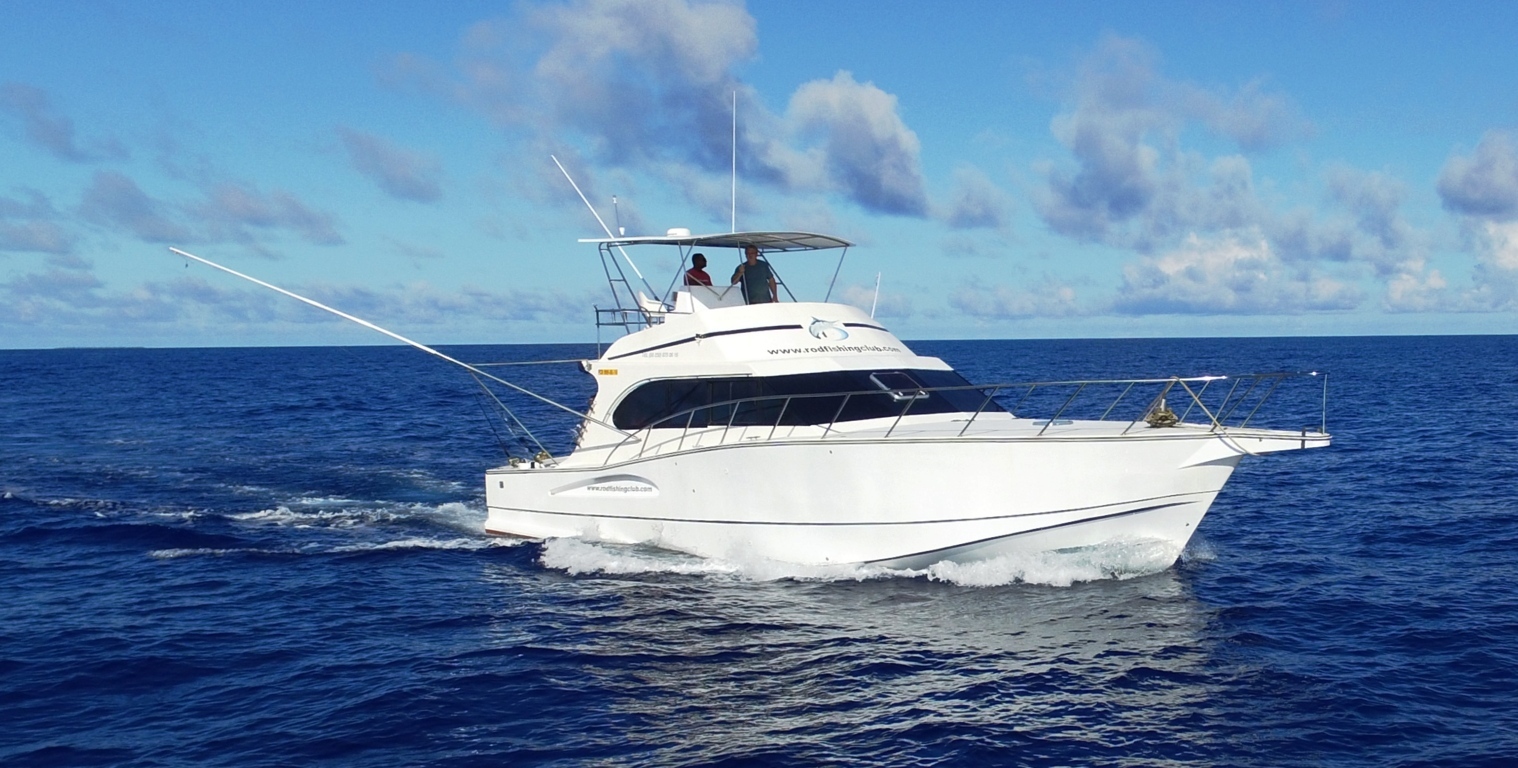
DOGTOOTH TUNA OR DOGGY (gymnosarda unicolor)
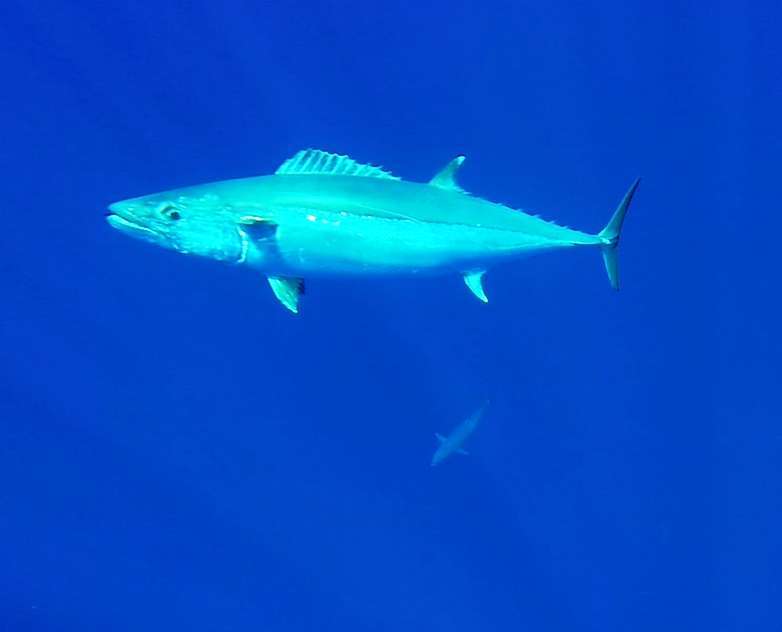
DOGTOOTH TUNA CARACTERISTICS
The Gymnosarda Unicolor is commonly called dogtooth tuna, doggy or white tuna in Rodrigues. While seeing this fish’s mouth we clearly understand why. Its impressing jaws wide opened till its big eyes are composed with 50 conical canine teeth, like a dog’s, the biggest being on the lower jaw.
Differently from other tunas, dogtooth tuna has got small blue spot at the top of its caudal fin. Its body is smooth and aerodynamic (its top speed being of 55 mph). Its colours range from metalized purplish blue green on top to silver grey on its belly.
While getting old, bigger pieces tend to get rounder.
«Our» dogtooth tuna caught jigging by Christian Mercier (Reunion) has become on 25 October 2007 the new IGFA world record on 130lb line. This 104,5kg doggy was 191,5cm long and its circumference was 133cm.

DOGTOOTH TUNA BEHAVIOUR AND REPRODUCTION
Dogtooth tuna or doggy is pelagic.
It is said migrating.
Rodrigues Island holds numerous spots (coral heads, rocky heads, bumps, reefs…) on its continental shelf and on both banks (Hawkins and Eastern). It is obviously one of the best spot on Earth to chase XXL dogtooth tunas (these famous big doggies). Here, their exceptional weights reach over 100kg.
- The dogtooth tuna world record by Christian Mercier of 104.5 kg on 25 October 2007 was caught on the Eastern Bank.
- The 100.240kg dogtooth tuna caught by Toni Costa on 26 October 2012 was on Hawkins Bank (Western Rodrigues).
- The 97kg dogtooth tuna (weighted 17h later) was supposedly over 100kg on caught on the continental shelf around Rodrigues on 23 October 2014.
You may increase the opportunities fishing over those 3 spots!
Male may turn blackish while mating.
Dogtooth tunas move within small groups (4 or 5 pieces) composed with one big female and many smaller males.
They can be alone. They evolve along the reef down to 100 m depth and more on the reef spots where they chase.
It seems more active at night but can be caught during the day as well.
FEEDING OF DOGTOOTH TUNA
It feeds with:
- pelagic fish
- cephalopods
- all bottom fish
- etc...
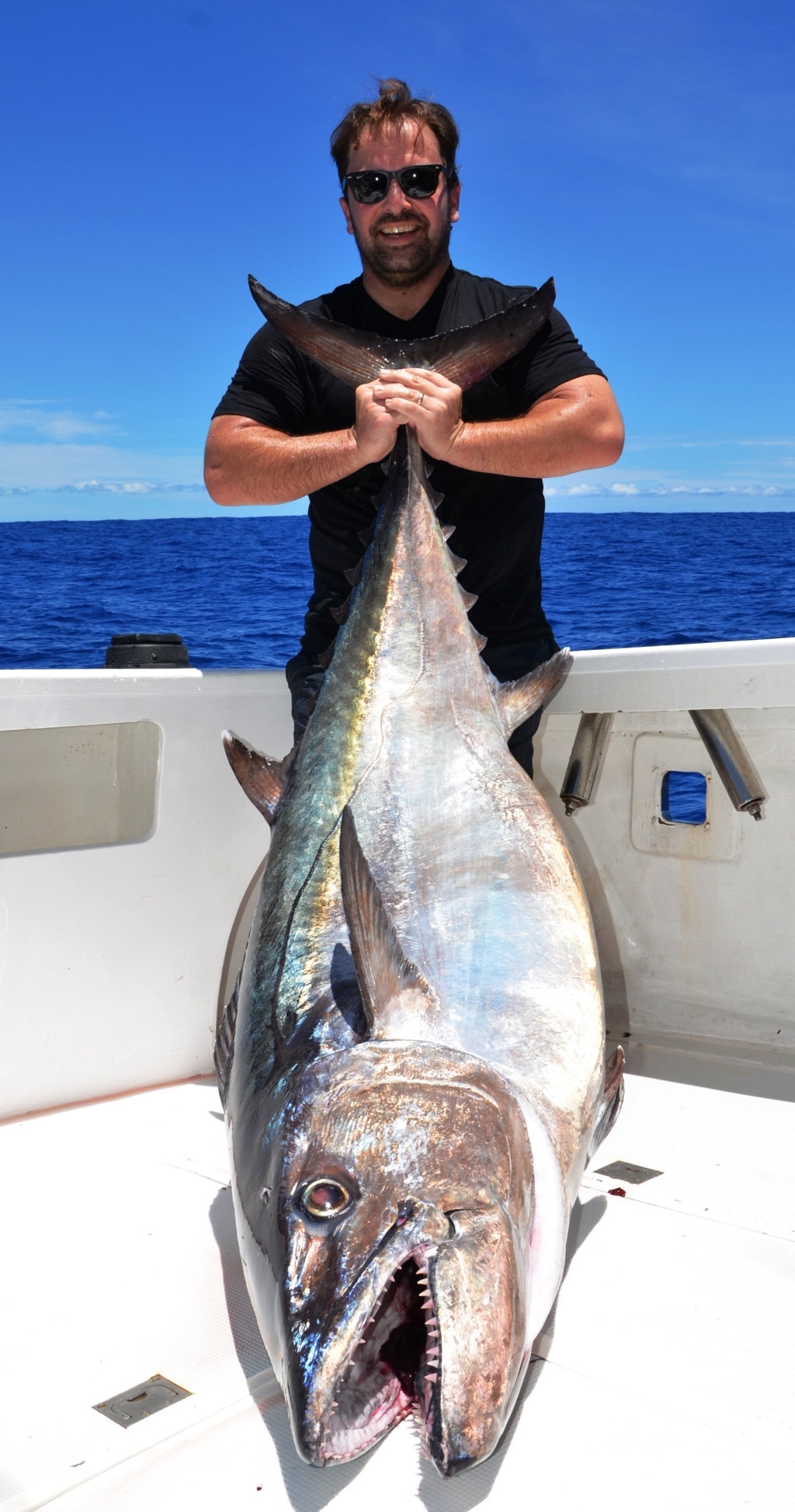
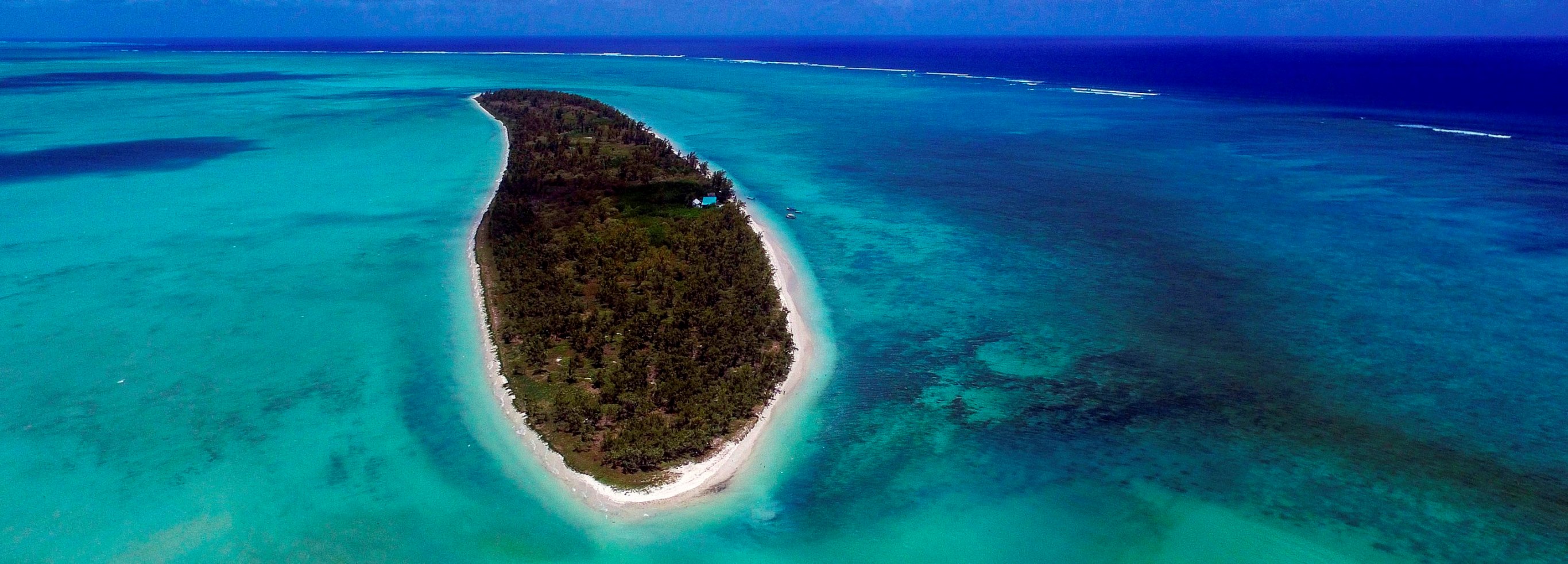
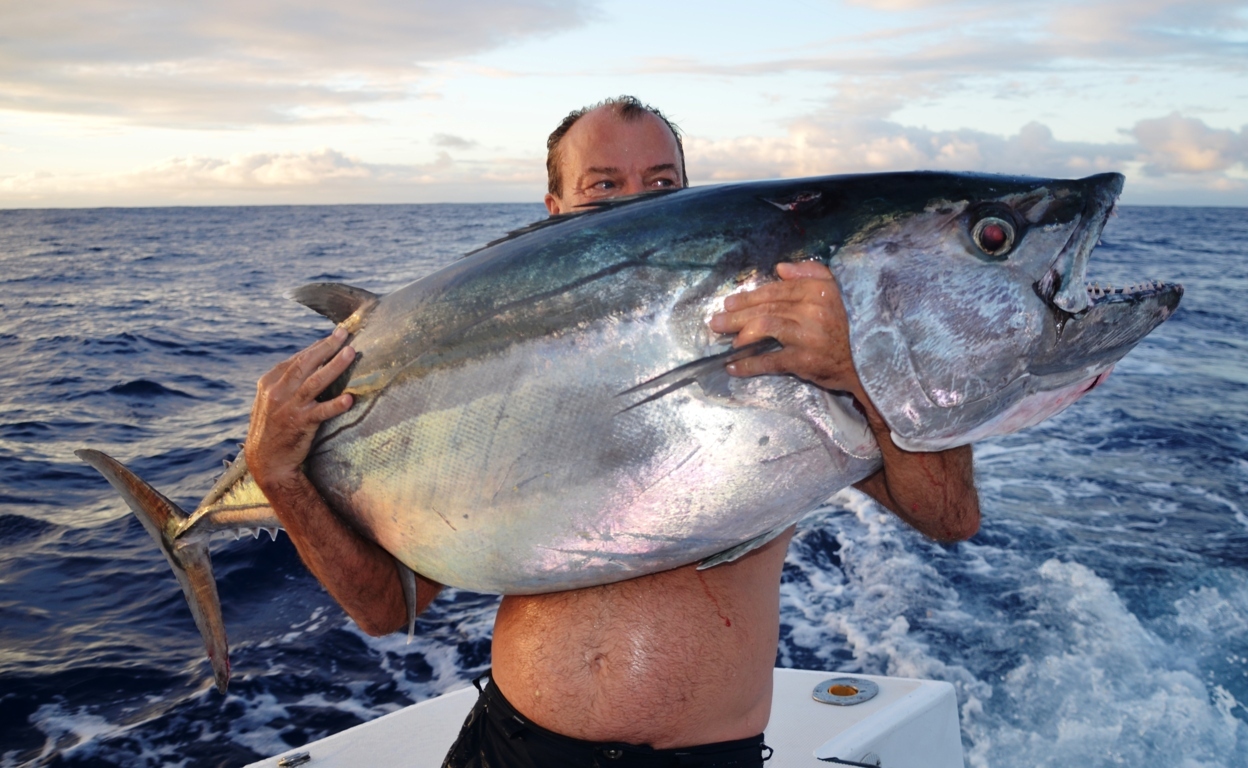
DOGTOOTH TUNA FISHING TECHNICS
Different techniques may be employed to catch dogtooth tuna:
- Jigging: We use short and stocky dark jigs (grey /black), blue or pink between 200 gr and 300 gr.
- Baiting:
- On live bait, drifting (bonito, blue emperor…).
- On live bait, slow trolling on the plateau or reef heads.
- On dead bait, drifting (half or whole de bonito).
- Trolling with artificial lures, especially like swimming fish (example Rapala Xrap, Speed Pro Deep Williamson).
- Popping or stick-baiting especially at sunset on reef heads up to 40m.
You will not be disappointed! Dogtooth tuna is a great fighter, the most prestigious jigging competitor in Rodrigues.
Its strike is often astonishing, before an unbridled rush, impressing with powerfulness, then fights strenuously.
It can accelerate violently with rapid changes of direction and looks for any obstacle that can rub and break line.

